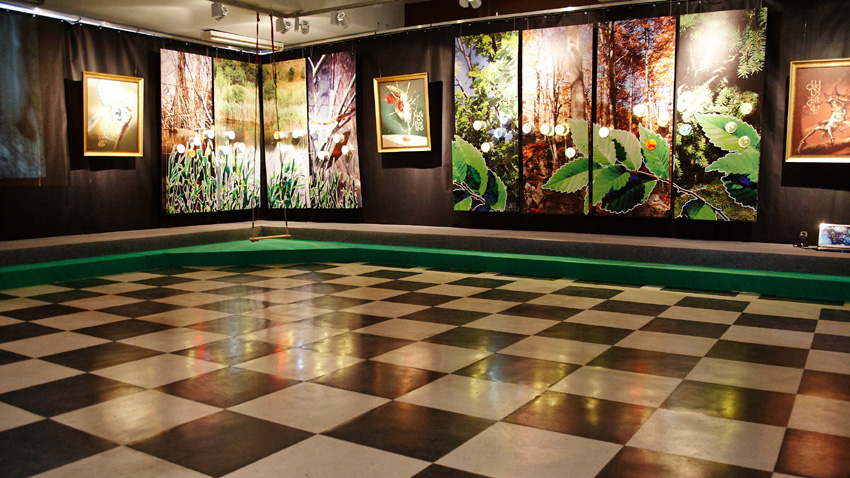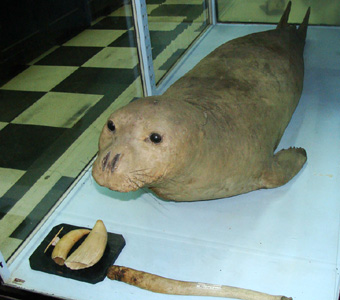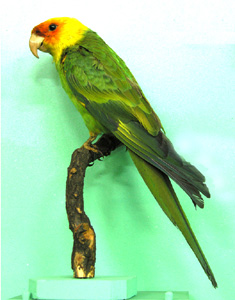In the remote 1889 Bulgarian Prince Ferdinand placed at the palace chambers his personal collection of Bulgarian and tropical birds, mammals and butterflies. Thus, the foundations of the first Bulgarian museum, known today as the National Natural Science Museum were laid. Ferdinand was famous with his interest in ornithology,  butterfly science, botany as well as with his participation in scientific expeditions across the jungles in Brazil, Northwestern Africa and the Bulgarian lands, too. Today the collection of the biggest Balkan museum for natural history spreads on a four-story building, built especially for this purpose in the 1930's by Ferdinand's son - King Boris III. This year the museum marks its 125th anniversary as one of the leading institutions in the field of classical natural science. The museum has been welcoming many adults and children over the years. More details from its curator Professor Dr. Nikolay Spasov:
butterfly science, botany as well as with his participation in scientific expeditions across the jungles in Brazil, Northwestern Africa and the Bulgarian lands, too. Today the collection of the biggest Balkan museum for natural history spreads on a four-story building, built especially for this purpose in the 1930's by Ferdinand's son - King Boris III. This year the museum marks its 125th anniversary as one of the leading institutions in the field of classical natural science. The museum has been welcoming many adults and children over the years. More details from its curator Professor Dr. Nikolay Spasov:
“Many periods and governments have changed indeed and the museum still continues to function. It is mainly due to the people's instinctive need to be in touch with nature. We are created by nature and are part of it. Children for example feel it best. This is also due to the fact that our employees were born with the will to work in this field and know how to attract people's attention.”

 The huge scientific collections which attract scientists from all parts of the globe are as interesting as the other items on display, Professor Spasov explains. Leading Bulgarian scientists in fields such as: archaeozoology, environmental protection, bat research and palaeontology of vertebrates work at the museum. They collaborate with colleagues from France, England, Belgium, Greece, the USA, Russia, China and other countries.
The huge scientific collections which attract scientists from all parts of the globe are as interesting as the other items on display, Professor Spasov explains. Leading Bulgarian scientists in fields such as: archaeozoology, environmental protection, bat research and palaeontology of vertebrates work at the museum. They collaborate with colleagues from France, England, Belgium, Greece, the USA, Russia, China and other countries.
“Currently we estimate the museum's collection at nearly half a million pieces. The collections of birds and insects are quite impressive. In our paleaontology department in the town of Asenovgrad (Central South Bulgaria) we have nearly 40,000 fossils from the Late Miocene era dating back to 7-8 million years ago, when nature in Southern Europe was similar to the one in present Africa-with trunk animals, rhinoceros, giraffes, antelopes, etc. We have a large collection which displays over 1/3 of all world minerals. ”
Today the museum's collections are enriched with items found by the museum's scientists during their participations in expeditions and private trips.
“In the 1980's for example we made a large zoological expedition to Mozambique where we found many animal exponents, Professor Spassov recalls. Apart from that, we buy exponents, which is now quite difficult due to the lack of finance. Things were different in the past though. King BorisIII used to spend lots of money on collections bought from all parts of the globe.”
 What are some of the most interesting museum exponents?
What are some of the most interesting museum exponents?
“The Carolina parakeet which became extinct is among our most-interesting exponents. One hundred years ago these birds covered the whole sky in some parts of North America, but were later shot by the humans. Today only several museums worldwide have such birds on display. I would also mention the Bulgarian mouse-tailed dormouse - a very small animal which lives in Southeastern Europe and the European part of Turkey only. The Monk Seal is also on display in our museum. I used to see such Monk Seals on the rock of Kaliakra Cape when I was a child. However, these animals can not be seen in the Black Sea anymore, because there is no more food for them at that place. ”
More interesting details from Professor Spassov:
“This year we received a very precious gift-a piece of meteorite from Mars. It was given by renowned geologist Dmitry Lobanov-Rostovsky who is a member of an ancient aristocratic family and lives in England. We also keep at the museum a piece of the Moon-a present from the US government, as well as Moon samples granted by the former Russian government”.
The museum marks its 125th anniversary with a series of interesting events including the initiative which aims at keeping the museum open for 125 hours between August 19 and 24. The scientists will as always explain to their guests how nature reveals their secrets to them.
English version: Kostadin Atanasov
“On 17 August 986 the warriors of Samuel smashed up on this spot the Byzantine invaders of Emperor Basil II. Glory forever!” These are the words engraved on a stone plate, placed at the Trayanovi Vrata (Gate of Trajan) fortress, situated some 60 km to..
The ancient Villa Armira, built in the second half of the 1 st century AD, is the most opulent Roman palace in what are today the Bulgarian lands. It once belonged to an eminent Thracian noble and was the manor house of his land tenure. It..
Nature is an unsurpassed architect. For millions of years it has worked to create its unique pieces: the crystals that inspire a feeling of brilliance, refinement and beauty. Shown together in the same place, these properties of colored minerals..

+359 2 9336 661
